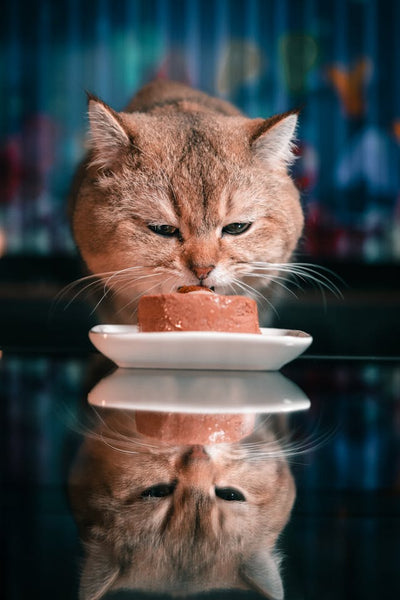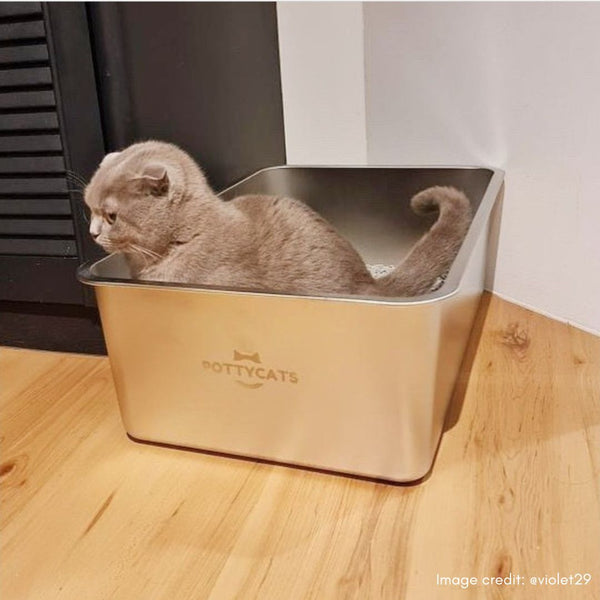
Cats are captivating creatures, and one of their most mesmerizing features is their eyes. Whether your feline friend has piercing blue eyes, mysterious green ones, or striking copper hues, you might find yourself wondering—does my cat's eye color mean anything?
While eye color in cats is primarily determined by genetics, it can offer clues about their breed, age, and sometimes even their health. Let’s explore what those sparkling eyes might be saying.
🧬 The Genetics Behind Cat Eye Colors
A cat’s eye color is determined by two factors: the amount of melanin in the iris and the way light reflects off it. Melanin is the same pigment that determines fur and skin color in animals. But here’s the twist: a cat's eye color isn’t necessarily related to their fur color (though some patterns and breeds do show a connection).
The most common cat eye colors include:
-
Blue
-
Green
-
Yellow / Amber / Gold
-
Copper
-
Odd-eyed (two different colored eyes)
💙 Blue Eyes: The Baby Blues & Beyond
All kittens are born with blue eyes. That’s because melanin production hasn’t kicked in yet. By 6 to 12 weeks, their permanent eye color will begin to emerge.
However, some adult cats keep their blue eyes forever. This is common in breeds like:
-
Siamese
-
Ragdolls
-
Himalayan
-
Turkish Angora
Blue eyes in adult cats often indicate a lack of melanin in the iris. In white or mostly white cats, blue eyes can sometimes be associated with congenital deafness—especially if the cat has one or both eyes blue.
💚 Green Eyes: The Emerald Enigma
Green-eyed cats are truly striking. The color ranges from pale gooseberry green to deep emerald. Green eyes are often seen in:
-
Russian Blues
-
Egyptian Maus
-
Oriental Shorthairs
Green eyes result from a moderate amount of melanin, and they are more commonly found in European or Asian cat breeds. It’s often considered a trait of elegance and mystery.
🧡 Yellow, Amber, and Gold Eyes: The Golden Glow
Yellow-based hues—from light lemon to deep amber or gold—are among the most common eye colors in cats. These shades come from higher levels of melanin in the iris.
You’ll see these in many domestic short-haired and mixed-breed cats, but also in pedigreed breeds like:
-
Burmese (golden eyes)
-
Bombay (copper eyes)
-
British Shorthair
These warm tones often give cats a wise, intense appearance—perfect for that "watching your every move" vibe cats are so good at.
🧿 Odd-Eyed Cats: One Blue, One Green/Amber
Known as heterochromia, this rare trait occurs when each eye has a different color. It’s most common in white or bicolor cats. Often, one eye is blue, and the other is green or amber.
Breeds known for this include:
-
Turkish Van
-
Turkish Angora
-
Khao Manee
Odd-eyed cats are not typically at risk of health issues related to eye color—though, as mentioned earlier, those with blue eyes (especially white cats) may be deaf in one or both ears on the same side as the blue eye.
🚨 When to Worry About Eye Color Changes
While natural changes from kittenhood to adulthood are expected, sudden changes in eye color in an adult cat may signal a health problem.
Potential causes include:
-
Uveitis (inflammation in the eye)
-
Glaucoma
-
Infections
-
Trauma
-
Melanoma of the eye
If you notice your cat's eyes changing color, clouding over, or looking irritated, it’s best to consult a vet.
👁️ The Eyes Have It
Your cat’s eye color is part of what makes them unique. Whether they glow like gold or gleam like sapphires, those eyes are more than just pretty—they’re windows into your cat’s heritage and health.
So the next time your feline blinks at you slowly, take a moment to appreciate those gorgeous orbs—and know there’s a whole world of science and beauty behind them.



